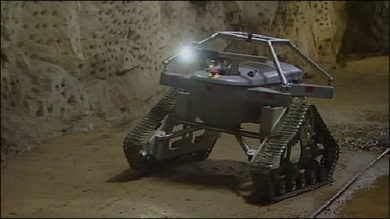Since civilization began, people have used mining techniques to access minerals in the surface of the Earth. Discoveries have shown that flint pebbles were extracted from deposits in France and Britain as far back as the New Stone Age. Ancient Egyptians mined copper as far back as 3000 BCE. In the earliest days, mining was slow-going and dangerous. However, as time progressed, society has developed safer and more accurate methods of locating and uncovering substances found in the earth.
United States Mining History
 Gold mining
Gold mining
- In 1848, the California Gold Rush brought approximately 300,000 people to California from abroad and elsewhere in the country.
- In 1858, people flocked to Colorado during the Pike’s Peak Gold Rush. Just one year later, silver veins were discovered in Colorado as well.
- From 1898 to 1911, the Nome Gold Rush, Klondike Gold Rush, and Fairbanks Gold Rush occurred in Alaska, bringing prospectors and miners to the Yukon River Valley.
Coal mining
- Some coal mining began before 1900, but the most productive coal mining techniques didn’t develop until after the turn of the century, including the first conveyor belt and mechanized coal loading.
- Bituminous coal overtook anthracite in the mid-1800s.
- In the 1960s, smaller coal companies merged into larger, more diversified firms.
- In 2008, competition in the coal mining industry became more intense than ever, leading to a demand for better technology and new mines.
History of Mining Technology
In the beginning, miners used primitive tools for digging. Mining shafts were dug out by hand or using stone tools, making the entire process very lengthy. Eventually, the pick and hammer were replaced with fire to clear tunnels and reach greater depths at a faster rate. By piling a heap of logs near the rock face and burning them, the rock weakened and fractured.
Mining technology leaped forward again in the late Middle Ages when miners started using explosives to break up large rocks. Black powder reached the West, likely from China. Black powder was eventually replaced with dynamite in the mid 19th century. At the same time, advancements were being made in motorized mining tools, such as drills, lifts and steam-powered pumps.
The Industrial Revolution spurred improvements in explosives and mining equipment. Mechanical drills powered by pistons, then compressed air, significantly increased the capability and efficiency of mining hard rock. Improvements in other mining processes occurred too. Hand-powered loading and hauling were replaced by electric conveyors, mine cars, and vehicles. Steam-driven pumps solved the problem of water inflow. Candles and oil-wick lamps were improved by gas lamps, and eventually battery-powered lamps. Mechanization and new technology sparked dramatic improvements in mining techniques.
Mining Technology in the Present
In today’s technologically-advanced society, mining techniques are always improving. For example, using surface mining techniques, many mining operations are now able to extract over 85 percent of minerals and 98 percent of metallic ores — without digging a shaft or endangering the lives of workers. Newly-developed machines used for grinding and crushing can extract minerals from the earth with less energy than ever before.
Miners still use heavy machinery, such as explosives, trucks, drills, and bulldozers, especially if they must dig deep into the earth. However, advances in technology have allowed miners to excavate with more accuracy and less harm to the surrounding environment. More efficient machinery can also be used to reduce energy consumption and improve the number of minerals or metals gleaned from the shaft.
The history of mining is rich and complicated. Mining has led to great advancements for society, but the dangers of mining have also resulted in the deaths of many workers. As technology continues to advance, however, mining techniques become even more accurate and efficient. In the future, revolutionary technologies may eliminate the need for hands-on involvement from miners entirely.


 Gold mining
Gold mining




